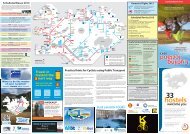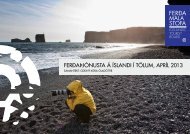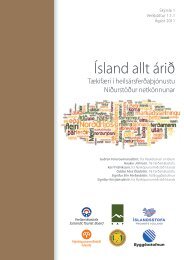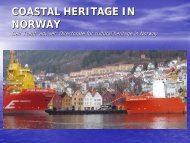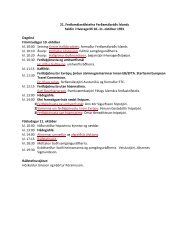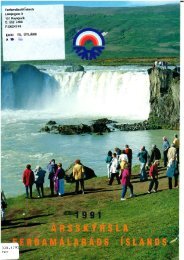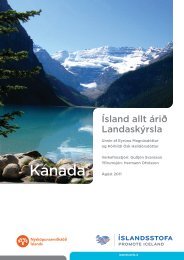Untitled
Untitled
Untitled
You also want an ePaper? Increase the reach of your titles
YUMPU automatically turns print PDFs into web optimized ePapers that Google loves.
2. Image & destination<br />
The actual act of communion between tourist and attraction is less<br />
important than the image or the idea of society that the collective act<br />
generates.<br />
- Dean MacCannell 8<br />
To compete for tourists, a location must become a destination.<br />
- Barbara Kirshenblatt-Gimblett 9<br />
We have to imagine a foundation with wings on its feet!<br />
- Michel Serres 10<br />
The storyline that tourist destination images play a central role in tourism,<br />
for example in the transformation of places into tourism commodities, will<br />
in different guises appear throughout this report. In this chapter, we will<br />
begin by taking a closer look at precisely the two concepts of “image” and<br />
“destination”. However important they may be in themselves, we are here<br />
primarily interested in their role in tourism theory.<br />
That tourist destinations increasingly must compete on a global<br />
tourism market for attracting tourists is something that if often stressed in<br />
tourism studies, as well as in the tourism industry. A prerequisite for<br />
appearing there is that specific locations on the surface of the Earth<br />
manage to ontologically transform themselves through re-presentations<br />
into places for tourism. In other words, in order to be successful in the<br />
competitive struggle, locations must meet the tourists on the generating<br />
market as images with touristic values.<br />
In the literature these are often referred to as “tourist destination<br />
images” (TDIs) and they can be found in tourist brochures, adverts,<br />
commercials and in various media coverage of places for tourism. These<br />
images have been a central concern for marketing agencies and various<br />
actors and stakeholders within the tourism industry, in particular because<br />
of their assumed capability to influence tourism consumption. That images<br />
play a mediating role in tourism is something that also the tourism<br />
researcher is facing. As Hunter states:<br />
8 MacCannell 1976/1999, pp. 14-15.<br />
9 Kirshenblatt-Gimblett 1998, p. 152.<br />
10 Serres with Latour 1995, p. 114.<br />
13



